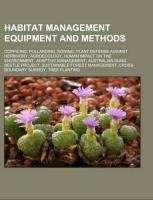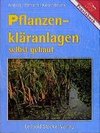
-
 Anglický jazyk
Anglický jazyk
Habitat management equipment and methods
Autor: Source: Wikipedia
Source: Wikipedia. Pages: 62. Chapters: Coppicing, Pollarding, Sowing, Plant defense against herbivory, Agroecology, Human impact on the environment, Adaptive management, Australian Dung Beetle Project, Sustainable forest management, Cross-boundary subsidy,... Viac o knihe
Na objednávku
17.91 €
bežná cena: 19.90 €
O knihe
Source: Wikipedia. Pages: 62. Chapters: Coppicing, Pollarding, Sowing, Plant defense against herbivory, Agroecology, Human impact on the environment, Adaptive management, Australian Dung Beetle Project, Sustainable forest management, Cross-boundary subsidy, Tree planting, Conservation grazing, Chainsaw, Controlled burn, Coarse woody debris, Uses of compost, Agroforestry, String trimmer, Variable retention, Nest box, Mycoforestry, Phytosociology, Seed drill, Root trainer, Windbreak, Animal repellent, Sheet mulching, Pruning shears, Loppers, Hydroseeding, Mitigation banking, Tree shelter, Biotic stress, Flail mower, Landscape manager, High forest, Dead hedge, Sally Saw. Excerpt: Plant defense against herbivory or host-plant resistance (HPR) describes a range of adaptations evolved by plants which improve their survival and reproduction by reducing the impact of herbivores. Plants use several strategies to defend against damage caused by herbivores. Many plants produce secondary metabolites, known as allelochemicals, that influence the behavior, growth, or survival of herbivores. These chemical defenses can act as repellents or toxins to herbivores, or reduce plant digestibility. Other defensive strategies used by plants include escaping or avoiding herbivores in time or in place, for example by growing in a location where plants are not easily found or accessed by herbivores, or by changing seasonal growth patterns. Another approach diverts herbivores toward eating non-essential parts, or enhances the ability of a plant to recover from the damage caused by herbivory. Some plants encourage the presence of natural enemies of herbivores, which in turn protect the plant. Each type of defense can be either constitutive (always present in the plant), or induced (produced in reaction to damage or stress caused by herbivores). Historically, insects have been the most significant herbivores, and the evolution of land plants is closely associated with the evolution of insects. While most plant defenses are directed against insects, other defenses have evolved that are aimed at vertebrate herbivores, such as birds and mammals. The study of plant defenses against herbivory is important, not only from an evolutionary view point, but also in the direct impact that these defenses have on agriculture, including human and livestock food sources; as beneficial 'biological control agents' in biological pest control programs; as well as in the search for plants of medical importance. Timeline of plant evolution and the beginnings of different modes of insect herbivory The earliest land plants evolved from aquatic plants around (Ma) in the Ordovician period. Th
- Vydavateľstvo: Books LLC, Reference Series
- Rok vydania: 2013
- Formát: Paperback
- Rozmer: 246 x 189 mm
- Jazyk: Anglický jazyk
- ISBN: 9781155532349


 Nemecký jazyk
Nemecký jazyk 








